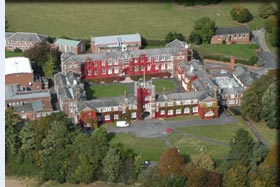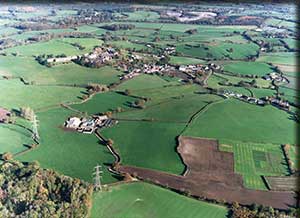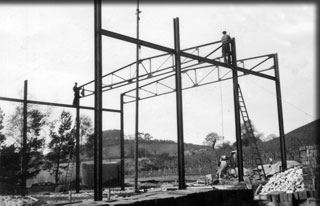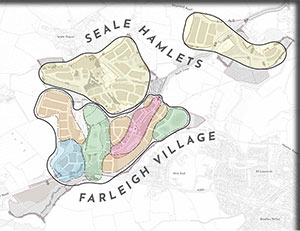Seale-Hayne Future Group |
|||||||||||||||||||||||||||||||||||||
Formation |
|||||||||||||||||||||||||||||||||||||
 When the University of Plymouth announced plans to close Seale-Hayne there was grave concern amongst many people, especially those who had been closely involved with various aspects of the college throughout its remarkable history. When the University of Plymouth announced plans to close Seale-Hayne there was grave concern amongst many people, especially those who had been closely involved with various aspects of the college throughout its remarkable history.
In a chance conversation in December 2002 between Jim Hosking and Ian Goodwin, it became clear that they both (along with others) had been instrumental in making decisions about the future of the College that ultimately resulted in the ownership of Seale-Hayne being passed in its entirety to the University of Plymouth. Jim had been a former Governor of the College and was a member of the original Seale-Hayne Faculty Council during the transfer of the College to the University. Ian had been a member of the reconstituted Seale-Hayne Faculty Council during the negotiations between the University and the Charity Commission surrounding the ownership of the Charity’s assets.Under the chairmanship of the late Jim Hosking, a small group met at Seale-Hayne in January 2003 to discuss the closure plans and to investigate the possibility of somehow maintaining land-based education at the historic campus. They called themselves “Seale-Hayne Future” (SHF). |
|||||||||||||||||||||||||||||||||||||
Development and work of SHF |
|||||||||||||||||||||||||||||||||||||
| The group met regularly throughout the following eight years and attracted much media interest. It expanded quickly as more and more people realised exactly what had happened and what was happening at the site, worried about the effect that the closure of Seale-Hayne would have not only around Newton Abbot, but also within the land-based education sector.
This sequence is neatly summarised in “The Rape of Seale-Hayne”, written by Peter Miller who was the legal adviser to one of the groups interested in forming an educational and research enterprise at the campus. The Seale-Hayne Future group also worked closely with Newton Abbot Town Council, Teignbridge District Council and Devon County Council to examine and challenge the planning issues raised by the closure and the possible availability of the Estate, coupled with the proposals for development that had already been put forward by the University. SHF spearheaded a successful high profile campaign to raise public awareness of all the issues involved. It led the protests against development plans for the Estate and even put forward its own detailed proposal for the future of Seale-Hayne. The group also became a valuable ally to other interested organisations who were formulating creative and constructive education-based plans for the future of the buildings, houses and farmland that make up the Estate. The Seale-Hayne Future Group has so far been influential in saving the bulk of Seale-Hayne’s farmland from the developers, but the pressure from house builders continues, with companies and their agents constantly pushing the district council for permission to swallow up more and more of this productive farmland for housing. After the sale of Seale-Hayne to The Dame Hannah Rogers Trust in 2009, SHF has met less regularly and it is now closely allied to the Seale-Haynians Alumni Club. But members of Seale-Hayne Future are constantly aware that there will be on-going issues to scrutinise in the future involving Seale-Hayne, it’s farmland and the Seale-Hayne Charity. |
|||||||||||||||||||||||||||||||||||||
|
|||||||||||||||||||||||||||||||||||||
SHF and the Teignbridge District Council (TDC) Core Strategy plan. |
|||||||||||||||||||||||||||||||||||||
 Since 2003 the Seale-Hayne Future Group has been arguing that the Grade II listed former Agricultural College buildings, along with the 450 acres of its productive farmland should remain in use for education and food production. But after the University of Plymouth put forward its own plans for substantial development of the farmland, it was clear that Seale-Hayne’s farm would be a prime target for the demand for new housing. Since 2003 the Seale-Hayne Future Group has been arguing that the Grade II listed former Agricultural College buildings, along with the 450 acres of its productive farmland should remain in use for education and food production. But after the University of Plymouth put forward its own plans for substantial development of the farmland, it was clear that Seale-Hayne’s farm would be a prime target for the demand for new housing.
In 2009 the University eventually agreed a sale, splitting the estate into the farmland, the College buildings with surrounding land, and the housing stock with the old farm buildings. It is understood that they retained an overage agreement should any of the land be sold for future development. In November 2011, TDC released its “20-year Core Strategy Plan” covering the region’s development strategy until the year 2033. It seemed that much of the Seale-Hayne estate was earmarked for development within the Houghton Barton “vision” of the Council’s Strategic Plan. Because of this, SHF responded to the first draft of the plan and became registered as a consultee with TDC over its long-term planning proposals for the region. A Many of those decisions involve the farmland that used to belong to Seale-Hayne College. There are changes and developments every year and these are monitored by SHF along with The Seale-Haynians, with yearly updates from Ian Goodwin published in “The Seale-Haynian” annual magazine. Ian’s updates chart the history and progress of the development plans along with changes at the College and can be seen here: SHF Group Updates – 2004 to 2020. The magazine update in 2020 references a planning application to build over even more of the Seale-Hayne farm than was originally agreed in the Teignbridge Development Plan, as the proposers can apparently not fit the required number of houses within the allocated area. On behalf of SHF, Ian has written to the planning department again, links to his two letters are below.
|
|||||||||||||||||||||||||||||||||||||


